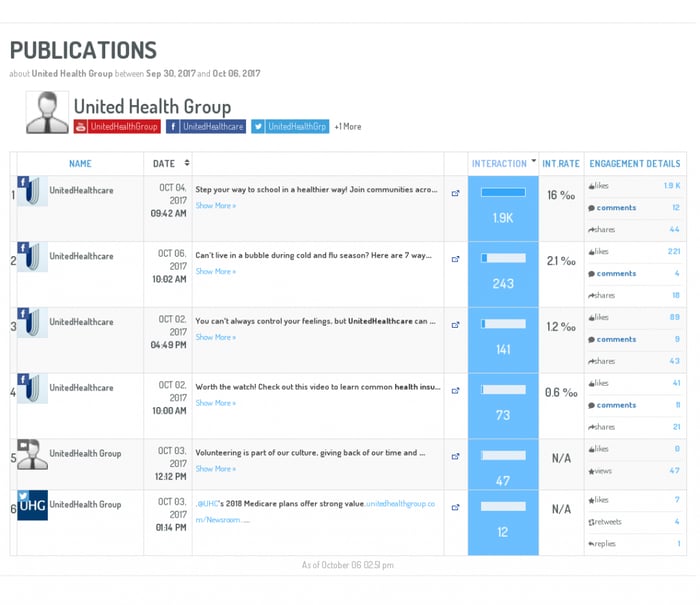6 Social Media Strategies For Effective Consumer Engagement
In January of 2016, Burger King challenged Wendy’s 4 for $4 deal on Twitter:
https://twitter.com/BurgerKing/status/690279858295939072
Wendy’s wasted no time in responding to this challenge. When a customer Tweeted at Wendy’s asking them what made their deal more appealing than Burger King’s, their quick and witty response earned them over 25,000 retweets and over 35,000 likes:
https://twitter.com/Wendys/status/690562988005285888
When approached well, customer social media engagement can be a powerful tool for increasing brand awareness and building customer loyalty.
A brand’s social media accounts should not be a one-way promotional channel for products - they should be an outlet for creating authentic brand relationships with customers. Below you’ll find six best practices for effective social media engagement.
As always, feel free to connect with us on Twitter: @digimindci.
1. Develop a Community Management Strategy
- Identify the social media platforms on which your customers are most active.
- Use these relevant platforms to monitor useful information and discussions, follow up on current events, and search for post-sales feedback.
- Customize and adapt social media strategies in accordance with consumer feedback and to ensure that the content is consistently relevant to the target audience.
- International brands must be vigilant in tailoring the language and cultural interpretations of their social media content to specific markets to avoid confusing or offending their consumers.
2. Employ #Hashtags
The appropriate use of hashtags is integral to any successful digital marketing strategy. They are useful for communications strategies and follow up analysis of these communication efforts. You can find a previous article on how brands can use hashtags to effectively target customers here.
- Create a unique brand hashtag that customers will be able to easily identify and associate with the brand. A branded hashtag will help promote user generated content and develop a brand community.
- Monitor frequently used hashtags surrounding the brand and its industry, and engage with relevant user generated content that will fortify brand image.
- Identify potential brand ambassadors by monitoring positive posts from followers. Engage with influential followers by interacting with them on social media and making them part of the brand community. If possible, get into contact with these influencers, meet with them in person and have them promote your content.
3. Create a Unique Brand Personality
- Identify how competitors position themselves on social media and develop a unique communications strategy to compete and develop a positive brand reputation. Learn more about how social media can reveal the strategies of competitors here.
- Develop guidelines for client social media engagement and communication not only for the marketing team, but for all employees who can be integrated into a social selling and customer loyalty communications strategy.
4. Engage
- Comment, like, and share positive brand messages while being careful not to risk being perceived as spamming.
- Share and give credit to loyal contributors to demonstrate the brand's appreciation.
5. Reply Within an Appropriate Timeframe
- Employ a community manager or customer relationship team to respond to requests, conversations, and reviews of the brand’s products and services.
- Use chatbots for simple conversations on customer service messaging channels.
- Carefully redirect customers to the appropriate services to help them solve any issues or concerns.
 An analysis of the effectiveness of social posts, via Digimind Social.
An analysis of the effectiveness of social posts, via Digimind Social.
6. Create Relevant and Engaging Content
- Use insights from social media to create content which complements positive brand perceptions and the overall brand reputation.
- Monitor and analyze the political, cultural, social and trends of the market to ensure all social media content is appropriate and non-offensive.
- Ensure that while posting content on trending topics that brand positioning remains consistent. Be careful not to overuse buzzwords or discuss trending topics that are disconnected or irrelevant to the brand.
- Create videos that summarize the brand’s products and ambitions in an engaging and informative manner. This often leads to increased engagement and customer retention. Here’s Digimind’s take:
And after that?
Optimize your client engagement strategy by using a social media listening tool to identify:
- What social media content is generating the most customer engagement.
- Which social media platforms are most effective for the relevant sector.
Social media listening tools enable brands to determine which platforms and types of social media posts are most effective and thereby successfully communicate brand values and product features to customers.

